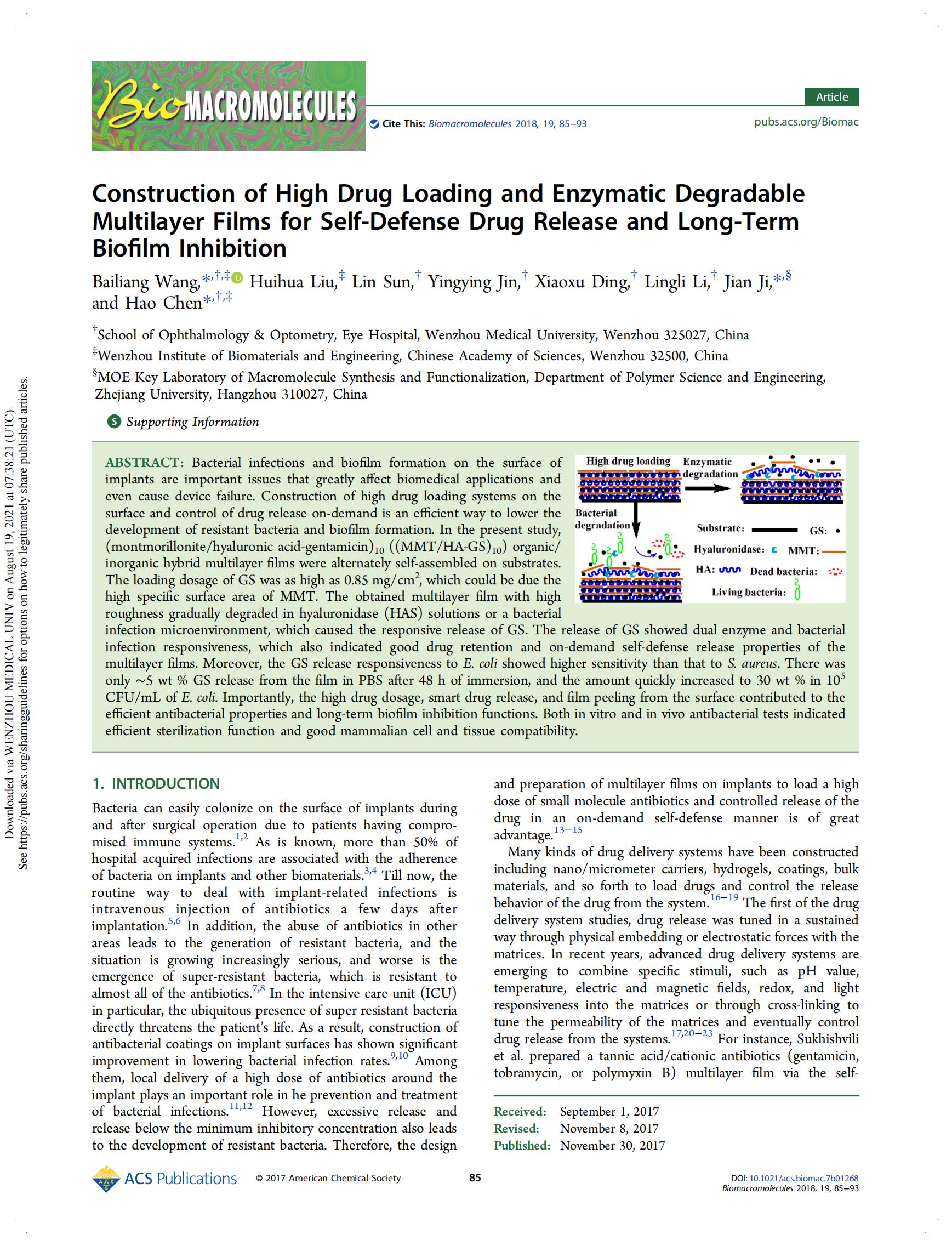Bacterial infections and biofilm formation on the surface of implants are important issues that greatly affect biomedical applications and even cause device failure. Construction of high drug loading systems on the surface and control of drug release on-demand is an efficient way to lower the development of resistant bacteria and biofilm formation. In the present study, (montmorillonite/hyaluronic acid-gentamicin)10 ((MMT/HA-GS)10) organic/inorganic hybrid multilayer films were alternately self-assembled on substrates. The loading dosage of GS was as high as 0.85 mg/cm2, which could be due the high specific surface area of MMT. The obtained multilayer film with high roughness gradually degraded in hyaluronidase (HAS) solutions or a bacterial infection microenvironment, which caused the responsive release of GS. The release of GS showed dual enzyme and bacterial infection responsiveness, which also indicated good drug retention and on-demand self-defense release properties of the multilayer films. Moreover, the GS release responsiveness to E. coli showed higher sensitivity than that to S. aureus. There was only ∼5 wt % GS release from the film in PBS after 48 h of immersion, and the amount quickly increased to 30 wt % in 105 CFU/mL of E. coli. Importantly, the high drug dosage, smart drug release, and film peeling from the surface contributed to the efficient antibacterial properties and long-term biofilm inhibition functions. Both in vitro and in vivo antibacterial tests indicated efficient sterilization function and good mammalian cell and tissue compatibility.
